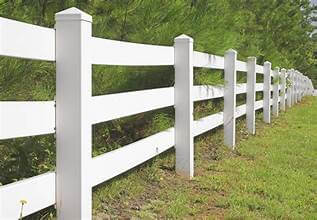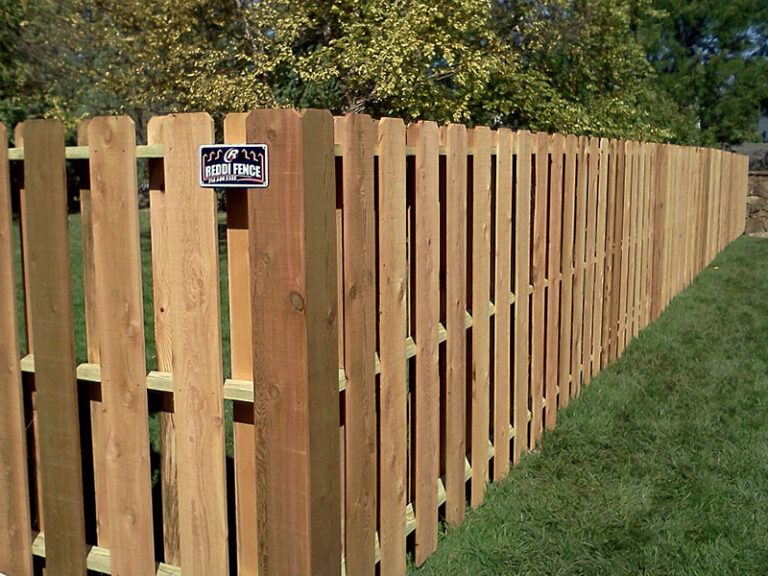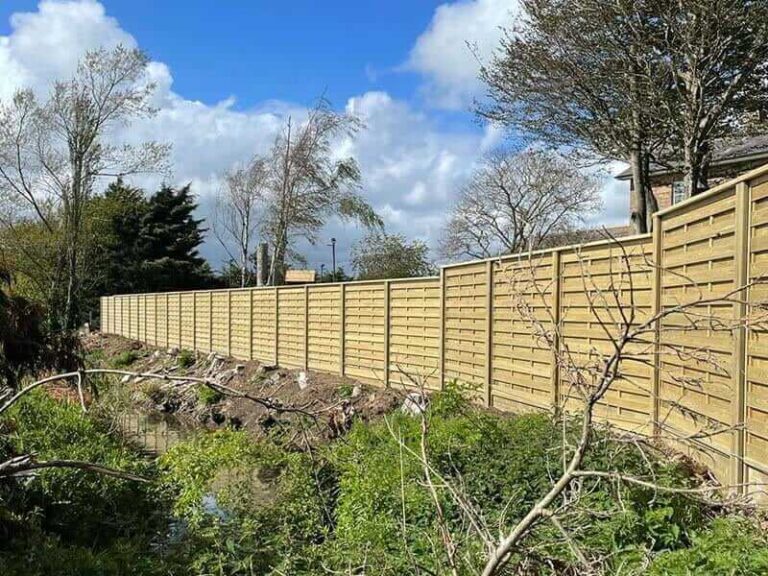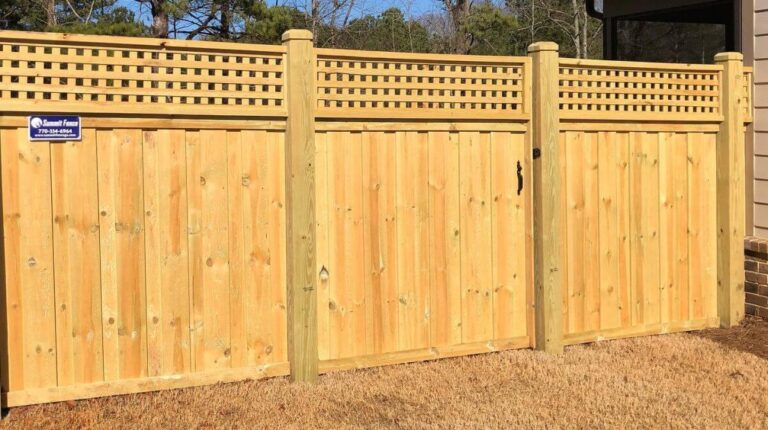Choosing the right fencing for high-wind areas is crucial for durability and security. Here are essential tips to consider when selecting fencing in these conditions.
Living in a high-wind area requires careful consideration when choosing fencing materials and designs to ensure the structure can withstand the harsh weather conditions.
The right fence can add an aesthetic value to your property, while also providing safety and privacy.
In this guide, we will explore the factors to consider, such as the type of material, fence design, and installation methods, to ensure that your fencing is able to withstand the challenges posed by high winds.
By following these tips, you can select the most suitable fencing that will stand the test of time in high-wind areas.

The Importance Of Fencing In High-wind Areas
Living in a high-wind area brings unique challenges to property management, emphasizing the need for the right fencing.
A sturdy fence not only ensures security and privacy but also acts as a shield against strong winds.
Explore eco-friendly fencing options on FencingSanMateo.com to make informed choices for a durable and sustainable solution.
Understanding The Impact Of Wind On Fencing
High winds exert significant pressure on fencing, leading to structural damage if the materials and installation are not designed to withstand these forces.
Wind can cause fences to lean, bow, or collapse, compromising their functionality and safety. Therefore, it is essential to comprehend the dynamics of wind resistance and its implications for fencing solutions in high-wind areas.
Risk Factors For Inadequate Fencing In High-wind Areas
The consequences of inadequate fencing in high-wind areas go beyond aesthetic concerns. Weak or improper fencing can pose safety hazards and potential liabilities.
Inadequate fencing may become dislodged, causing property damage, potential injury risks, and increased maintenance costs.
Identifying the risk factors associated with subpar fencing is crucial for making informed decisions that prioritize safety and resilience.
Importance Of Choosing Appropriate Fencing Materials
When it comes to fencing in high-wind areas, the selection of materials plays a critical role in determining the fence’s ability to withstand strong gusts.
Choosing durable and wind-resistant materials such as steel, aluminum, or composite materials can significantly enhance the fence’s longevity and stability.
Additionally, proper installation techniques and reinforcement strategies are essential for ensuring that the fence performs optimally in high-wind conditions.
Factors To Consider When Choosing Fencing
Durability And Wind Resistance
When selecting fencing for high-wind areas, durability and wind resistance are crucial factors to consider.
The fencing material and design should be able to withstand strong winds without compromising the structural integrity. Look for fencing options specifically designed to withstand high winds.
Material And Design Considerations
Material and design are fundamental aspects to assess when choosing fencing for high-wind areas.
Opt for materials such as aluminum, vinyl, or composite, as they offer superior strength and resilience against wind forces.
Additionally, consider the design of the fencing, ensuring it has a streamlined construction that minimizes wind resistance and maximizes stability.
Maintenance And Long-term Sustainability
Ensuring that the fencing requires minimal maintenance while offering long-term sustainability is vital.
Choose materials that are resistant to corrosion, rot, and insect damage to minimize the need for frequent upkeep.
Additionally, prioritize sustainable materials that contribute to environmental conservation and have a longer lifespan, reducing the need for frequent replacements.
Choosing The Right Fencing Materials
When it comes to choosing fencing for high-wind areas, selecting the right materials is crucial.
The impact of wind on various fencing materials, the benefits of metal and composite materials, and best practices for installation and reinforcement are all factors to consider.
Understanding these elements will help you make an informed decision while safeguarding your property effectively. Let’s delve into the specifics.
Impact Of Wind On Different Fencing Materials
High winds can exert significant force on fencing, leading to damage or failure if the materials are not sturdy enough.
Different materials respond differently to wind, with some being more susceptible to damage than others.
To ensure your fence can endure high winds, consider the following materials:
- Steel
- Aluminum
- Composite
Benefits Of Metal And Composite Materials
Metal and composite materials offer numerous advantages for fences in high-wind areas. These materials are known for their strength, durability, and resistance to weather-related wear and tear.
Some key benefits of metal and composite fences include:
- High durability
- Minimal maintenance requirements
- Resistance to rot, decay, and insect damage
- Longevity and reliability in extreme weather conditions
- Customizable styles and designs
Best Practices For Installation And Reinforcement
Proper installation and reinforcement are essential for ensuring that fences in high-wind areas remain standing and functional despite strong forces.
Utilizing appropriate techniques and reinforcement methods can significantly enhance the stability and longevity of your fence.
When installing and reinforcing fencing in high-wind areas, consider the following best practices:
- Utilize deep and sturdy post foundations
- Use heavy-duty fasteners and hardware
- Employ diagonal bracing for added support
- Consider wind-resistant designs and configurations
- Regularly inspect and maintain the fence for any signs of damage or weakness
Evaluating Wind-resistant Fencing Designs
Evaluating Wind-Resistant Fencing Designs is crucial when choosing fencing for high-wind areas.
The design of the fence plays a significant role in its ability to withstand strong winds.
Considering factors such as slatted or mesh designs, solid versus open fencing structures, as well as the height and spacing.
Can help in selecting a wind-resistant fencing solution that provides both functionality and aesthetic appeal for your property.
Benefits Of Slatted Or Mesh Designs
Slatted or mesh fencing designs offer several benefits when it comes to wind resistance.
These designs allow wind to pass through the fence, reducing the force exerted on the structure.
Additionally, they provide a level of transparency, which can help minimize the impact of wind on the surrounding area, making them an ideal choice for high-wind regions.
Impact Of Solid Versus Open Fencing Structures
The choice between solid and open fencing structures can significantly impact the fence’s ability to withstand windy conditions.
Solid fencing structures create a larger surface area for wind resistance, potentially making them more vulnerable to strong winds.
On the other hand, open fencing structures, such as mesh or slatted designs, allow wind to pass through, reducing the force exerted on the fence.
This can help minimize the risk of damage in high-wind areas.
Evaluating Height And Spacing For Optimal Wind Resistance
When evaluating wind-resistant fencing designs, considering the height and spacing of the panels is essential.
Taller fences may experience more significant wind loads, which can compromise their stability.
Opting for shorter fence heights and adequate spacing between panels can help minimize the impact of wind on the structure, enhancing its overall wind resistance.
Professional Installation And Maintenance Tips
When it comes to choosing fencing for high-wind areas, professional installation and regular maintenance are crucial for ensuring the longevity and stability of the fence.
In this section, we will discuss the importance of expert installation in high-wind areas, regular maintenance for longevity and stability, and proper repairs and reinforcement for existing fences.
Importance Of Expert Installation In High-wind Areas
Professional installation plays a vital role in ensuring that the fence is able to withstand the strong forces exerted by high winds.
Experts are well-versed in the specific requirements for high-wind areas and can assess the soil conditions, wind load, and other factors to determine the most suitable fencing materials and installation methods.
They can also ensure that the fence is properly anchored and supported to resist the powerful winds, reducing the risk of damage or failure.
Regular Maintenance For Longevity And Stability
Regular maintenance is essential to preserve the stability and durability of the fence in high-wind areas.
Wind can gradually weaken the structural integrity of the fence, so it’s important to inspect and maintain it regularly.
This includes checking for loose or damaged components, ensuring proper alignment, and addressing any signs of wear and tear.
Regular maintenance can help detect and address issues before they escalate, ultimately extending the lifespan of the fence.
Proper Repairs And Reinforcement For Existing Fences
For existing fences in high-wind areas, proper repairs and reinforcement are crucial to mitigate the risk of damage.
This may involve replacing damaged components, reinforcing weak points, or installing additional support structures to enhance the fence’s resistance to strong winds.
Timely repairs and reinforcement can prevent minor issues from escalating into significant damage during inclement weather, ultimately preserving the integrity of the fence.

Frequently Asked Questions
How Does Wind Affect Fencing Stability?
Strong winds can exert pressure on fencing, causing instability and potential damage.
What Type Of Fencing Material Is Best For High-wind Areas?
Heavy-duty materials such as steel or concrete are recommended for optimal wind resistance.
Are There Design Features That Help Fencing Withstand High Winds?
Fencing with solid panels or slat designs can reduce wind resistance and enhance stability.
Conclusion
Choosing the right fencing for high-wind areas is crucial for durability and safety.
By considering factors such as material strength, installation techniques, and maintenance, you can protect your property effectively.
Keep in mind the local climate and seek professional advice to ensure your fencing withstands the challenges of high winds.







